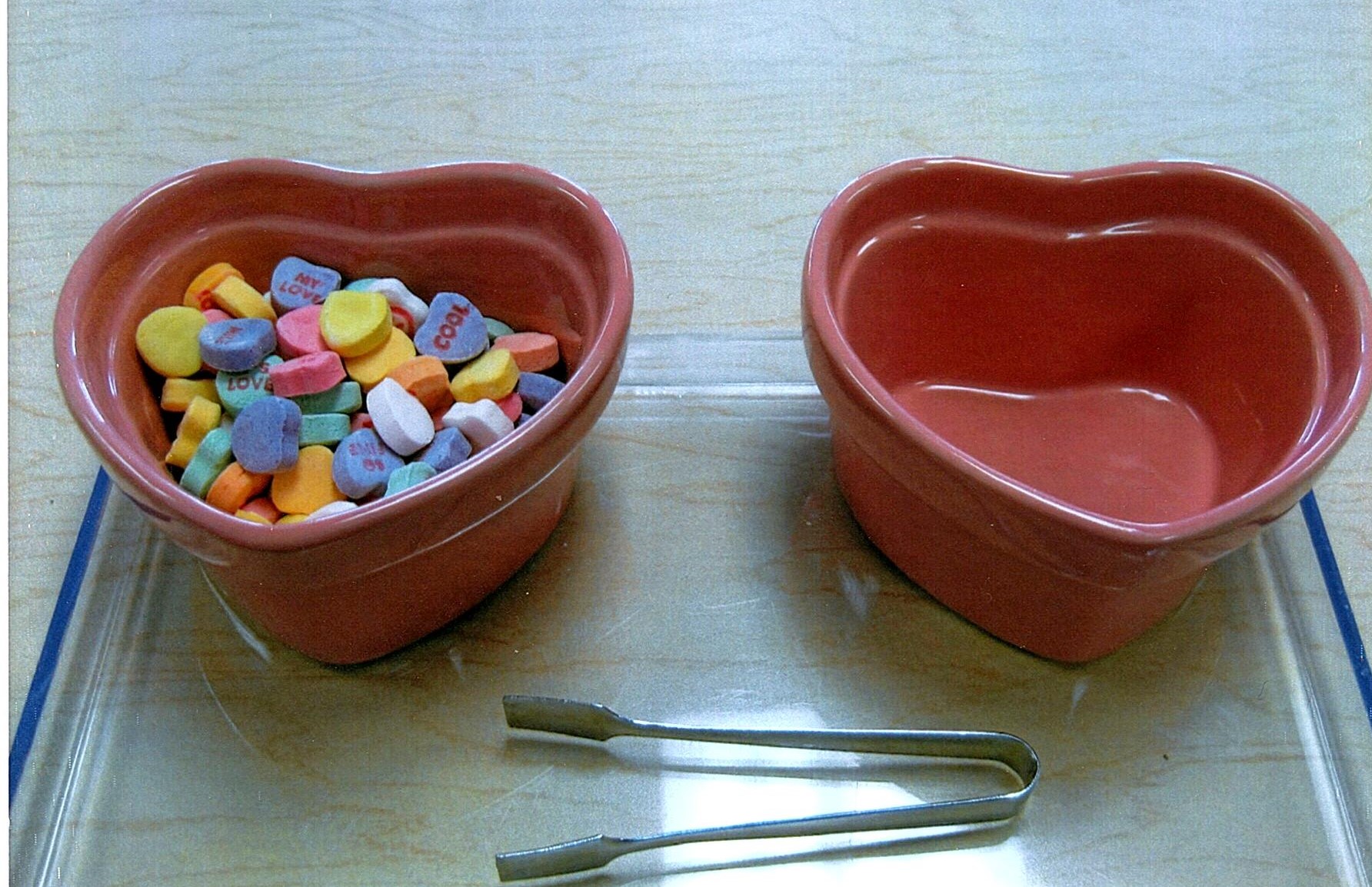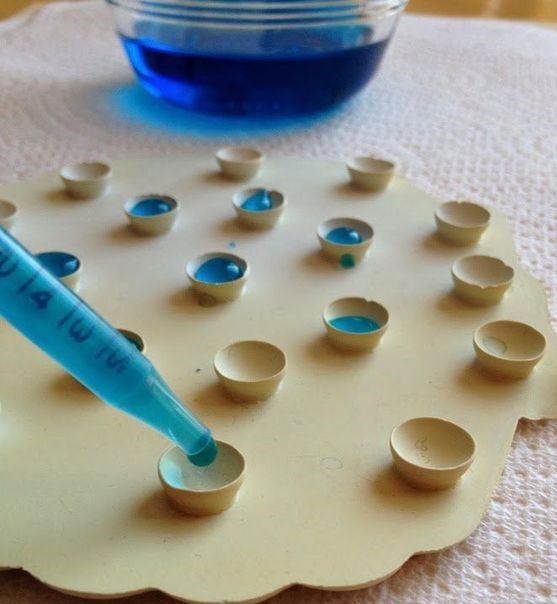Tongs, Droppers, and Bubbles
The most popular Practical Life activities in my classroom are using tongs and using a dropper. I typically set up multiple tong and dropper activities each month. These activities can be easily replicated at home.

Using Tongs:
The materials needed include a tray with two containers and a pair of tongs. The container on the left holds small objects (approximately ¾ full). The container on the right is empty. This work should be done on a table.
To do this activity, the student places the tray in front of them with the full container on the left-hand side. The child uses a three-finger grasp of their dominant hand to manipulate the tongs. They squeeze the tongs to pick up an object, then lift and transfer the object to the container on the right side. The student continues to move materials with the tongs until the container on the left is empty. They then put the tongs on the table and turn the tray around so the full container is on the left again. Often the child repeats this process several times.
Transferring with tongs helps the child’s development of order, concentration, coordination, and independence. Learning to use tongs strengthens the child’s hand and prepares them for future skills such as the three-finger grasp used to hold a pencil and those used in snack and food preparation.
When designing a Montessori activity, many aspects should be considered. Is the material attractive and color coordinated? Are the materials child-sized and child appropriate? Does this work relate to a real-life activity? Is the material in good condition and of good quality? Does the activity appeal to the child and hold their interest?
Creating an activity that meets all of these criteria can be challenging even for an experienced teacher. A few years ago, I had a beautiful set of strawberry shaped ceramic dishes, a wooden tray with hand-painted strawberries, and tongs with a strawberry shaped handle. I used small plastic strawberries that were the perfect size to be transferred with tongs. The work was beautiful, clean, and an acceptable size and weight to be carried easily by the students. At first, the children showed interest in the work.
But after a few days, I noticed that they were putting the strawberry tonging away quickly and didn’t seem interested in repeating the activity. What was wrong? I carefully observed a four-year-old giving it a try. She needed to use two hands to squeeze the tongs. I tried the activity myself and noticed that the tongs were tight and difficult to squeeze. I switched the tongs to a pair that were less beautiful but easier to open and close.
To avoid this sort of problem, it is important to always test the material before letting the children use it. Make sure it can be completed by the child with ease. Observe how the children interact with the activity and make changes when appropriate.
In October, I set up a tonging activity using two spider-themed dishes. Students transferred plastic spiders using a pair of plastic scientific tweezers. This work was designed with careful thought to each of the design elements above: it was beautiful; light, yet sturdy; and interesting to the children. This setup was easy enough for students to succeed, and they absolutely loved the work. Many would repeat the activity multiple times and return to the work almost every day.

Using a Dropper:
Using a dropper has a remarkably similar set up and similar aims, but it includes water and bubbles! The materials are a tray with two small containers—shot glasses or baby food jars work well—a dropper, and a sponge. The container on the left is ¾ full of water. The container on the right is empty. This work is also done on a table.
In my opinion, using a dropper is one of the best activities for increasing a child’s attention span. Again, they are using a three-finger grasp to transfer material from one container to the other. With a dropper, the child has the added enjoyment of watching bubbles appear as they squeeze the bulb at the top of the dropper, watching water fill the pipette as they release the bulb, and watching the water squirt out as they squeeze the bulb again over the empty container. The sponge is used to clean up any drops on the table or tray. Often children will repeat this activity again and again.
When preparing this work, consider using colored water and a variety of containers. You can also use larger bowls and a baster to transfer liquid, use a dropper to fill suction cups or bottle caps, and use a dropper to mix colors.
The Practical Life lessons Using Tongs and Using a Dropper are fun and interesting for the child. They are easy to assemble and help children increase their attention span and improve their fine motor control.

